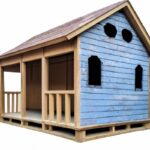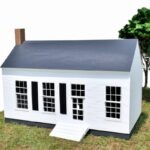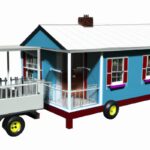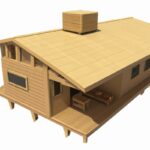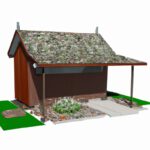Key Takeaways:
- Limited funding options available for building a Tiny House.
- Grants and funding opportunities for Tiny House construction are relatively scarce.
- Eligibility criteria for grants and funding can vary significantly.
- Exploring alternative financing options may be necessary for building a Tiny House.
Have you ever dreamed of living in a cozy, sustainable, and affordable tiny house?
Well, I’ve got some exciting news for you! Building a tiny house may be more within reach than you think, thanks to grants and funding options available for this unique form of housing.
In this blog article, I’ll be diving into the world of grants and funding opportunities specifically tailored for tiny house construction.
Whether you’re considering a federal grant, exploring state-specific programs, or looking into non-government funding options, I’ve got you covered.
Get ready to embark on your tiny house journey with confidence!
Grant/Funding Option |
Description |
Requirements/Eligibility |
Website |
National Housing Trust Fund |
Federal grant program for affordable housing initiatives |
– Must be used for rental assistance, development, or rehabilitation of affordable housing
– Households must have incomes below 30% of the area median income |
[National Housing Trust Fund](https://www.hud.gov/program_offices/comm_planning/nsp2/) |
Rural Economic Development Loan and Grant Program |
Program by the US Department of Agriculture (USDA) for rural economic development |
– Projects must be located in eligible rural areas
– Must benefit the community significantly |
[Rural Economic Development Loan and Grant Program](https://www.rd.usda.gov/programs-services/rural-economic-development-loan-grant-program) |
HUD Community Development Block Grants |
Grants to state and local governments for affordable housing and community development projects |
– The project must meet one of the national objectives outlined in the program guidelines
– Benefit low- and moderate-income individuals and neighborhoods |
[HUD Community Development Block Grants](https://www.hud.gov/program_offices/comm_planning/communitydevelopment/programs) |
Nonprofit Organizations |
Various nonprofit organizations offer grants or funding options for specific tiny house projects |
Eligibility criteria vary depending on the organization and project |
Depends on the organization |
Grants and Funding Options for Tiny House Construction
Government Grants for Tiny House Building Projects
Government grants can provide valuable funding options for those looking to build a tiny house. These grants are typically offered through federal, state, and local government programs.
The eligibility criteria and application process can vary, so it’s important to research and identify relevant grant opportunities.
Some federal grant programs focus on environmental considerations and compliance with design and construction standards. State and local grants may have residency requirements, income-based qualifications, and compliance with zoning and building codes.
Applying for grants typically involves gathering required documentation and completing application forms.

Overview of Federal Grant Programs
The federal government offers various grant programs that can potentially provide funding for your tiny house project. These grants are aimed at supporting different sectors, such as housing, community development, and energy efficiency.
Some programs that you might consider are the Community Development Block Grant, the Rural Housing Preservation Grant, and the Low-Income Home Energy Assistance Program.
Each program has its own eligibility requirements and application process, so it’s important to research and carefully review the details before applying.
State-Specific Grant Opportunities
State-specific grant opportunities can provide valuable funding options for building a tiny house.
Many states offer grants specifically for affordable housing or sustainable development projects, making them a great resource for individuals looking to build a tiny house.
These grants vary in eligibility requirements and funding amounts, so it’s important to research and understand the specific opportunities available in your state.
Some states may also have additional grants for low-income individuals or specific regions within the state.
Be sure to thoroughly explore all state-specific grant options to find the best fit for your tiny house project.
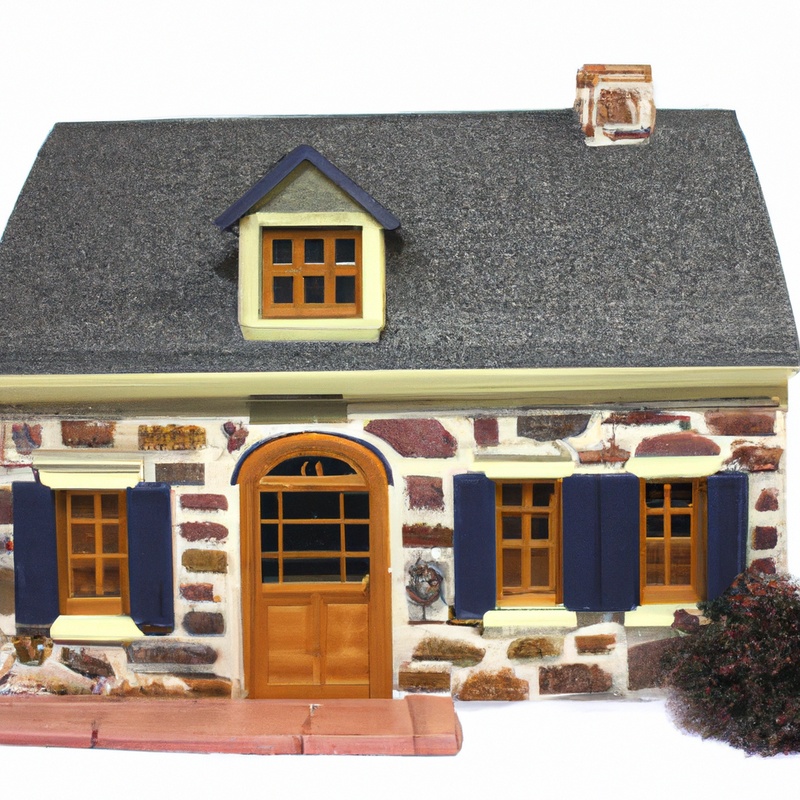
Non-Government Funding Options for Tiny Houses
There are several non-government funding options available for building a tiny house. One option is crowdfunding platforms, where you can create a campaign and ask people to contribute towards your project.
Another option is to seek grants from non-profit organizations that support affordable housing initiatives.
Additionally, you can explore personal loans and financing options from banks or credit unions. These alternatives allow you to access funds and turn your tiny house dream into a reality.
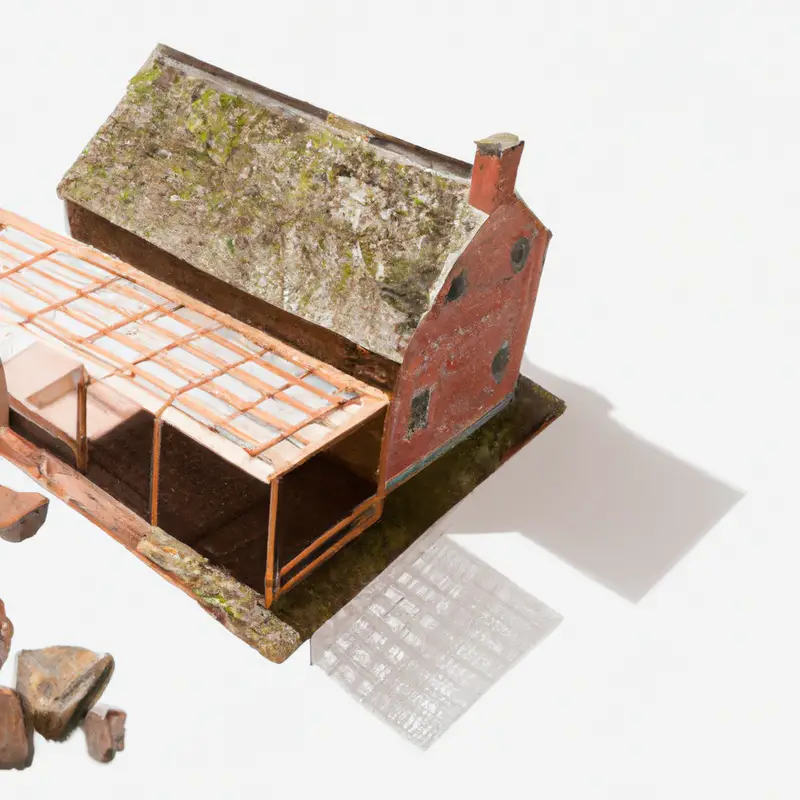
Crowdfunding Platforms
Crowdfunding platforms are a popular option for funding tiny house construction projects. These platforms allow individuals to raise money by pitching their ideas to a large online community.
Some popular crowdfunding platforms include Kickstarter, Indiegogo, and GoFundMe. On these platforms, you can create a campaign, set a funding goal, and offer rewards to backers.
It’s important to create a compelling campaign with clear project details and a compelling story to attract potential donors. Keep in mind that these platforms typically charge a fee or a percentage of the funds raised.
Non-Profit Organizations Offering Grants
Non-profit organizations can be a great resource for individuals looking to build a tiny house.
Many non-profits offer grants specifically for housing projects, including those involving tiny homes.
These grants can help cover construction costs, materials, and other expenses.
Some non-profit organizations that offer grants for tiny house construction include Habitat for Humanity, The Sprout Fund, and The Home Depot Foundation.
It’s important to research each organization’s specific eligibility requirements and application process before applying for a grant.
Personal Loans and Financing Options
Personal Loans and Financing Options: If you’re looking for funding to build your tiny house, personal loans can be a viable option. Many banks and online lenders offer personal loans for home construction projects, including tiny houses.
These loans typically have fixed interest rates and repayment terms that make it easier to budget for your project.
Additionally, you may also consider other financing options like home equity loans, credit cards, or borrowing from family and friends. Remember to compare interest rates and terms to find the best option for your needs.
Eligibility and Requirements for Grants and Funding
Federal Grant Eligibility Criteria
To be eligible for federal grants for building a Tiny House, certain criteria must be met. These criteria typically include environmental considerations, design and construction standards, and policy compliance.
Environmental considerations may involve using sustainable and eco-friendly materials.
Design and construction standards generally relate to safety and functionality. Policy compliance refers to adherence to relevant regulations and guidelines.
Meeting these eligibility criteria increases the chances of securing federal grant funding for your Tiny House project.
Environmental Considerations
When considering building a tiny house, it’s important to take into account the environmental impact of your project.
Here are some key environmental considerations to keep in mind:
- Energy Efficiency: Design your tiny house to be energy-efficient by incorporating features such as insulation, double-glazed windows, and energy-saving appliances.
- Sustainable Materials: Choose sustainable and eco-friendly materials for construction, such as reclaimed wood, recycled insulation, and low VOC paints.
- Water Conservation: Install low-flow fixtures and consider rainwater harvesting systems to minimize water usage in your tiny house.
- Waste Management: Plan for proper waste management by incorporating recycling and composting systems within your tiny house design.
- Renewable Energy Sources: Explore the use of renewable energy sources like solar panels or wind turbines to power your tiny house.
By considering these environmental factors, you can create a more sustainable and eco-friendly living space in your tiny house.
Design and Construction Standards
Design and construction standards are important when building a tiny house. These standards ensure that the structure is safe, durable, and compliant with building codes.
Some key standards to consider include:
- Structural Integrity: The design should be structurally sound, able to withstand various weather conditions and loads.
- Electrical and Plumbing Systems: These systems should be properly installed, following industry standards and local regulations.
- Insulation and Ventilation: Adequate insulation and ventilation are important for energy efficiency and indoor air quality.
- Fire Safety: Implementing fire-resistant materials and proper placement of smoke detectors and fire extinguishers is crucial.
- Accessibility: Consider designing the tiny house to be accessible for people with disabilities, if needed.
By adhering to these design and construction standards, you can ensure the safety and functionality of your tiny house.
Policy Compliance
Policy compliance is a key factor when it comes to obtaining grants or funding for building a tiny house.
It is important to understand and adhere to all relevant laws, regulations, and building codes in order to qualify for financial assistance.
This includes compliance with zoning restrictions, environmental considerations, and design and construction standards.
Failure to comply with these policies could result in ineligibility for grants or funding.
Therefore, it is crucial to research and understand the specific policy requirements applicable to your location before embarking on your tiny house project.
State and Local Grant Eligibility
State and local grant eligibility for building a tiny house varies depending on the specific requirements of each grant program.
Generally, eligibility criteria may include residency requirements, income-based qualifications, and compliance with zoning and building codes.
It is important to thoroughly research and understand the eligibility criteria for each grant opportunity before applying.
Residency Requirements
Residency requirements often play a key role in determining eligibility for grants and funding for building a tiny house.
These requirements typically involve establishing legal residency within the specific state or local jurisdiction offering the grants.
Some grant programs may require a minimum residency period before applying, while others may prioritize applicants who have been long-term residents.
It’s important to research and understand the residency requirements of the grant programs you are interested in to ensure you meet the necessary criteria.
Income-based Qualifications
To qualify for grants or funding options for building a tiny house based on income, you may need to meet certain criteria. These could include income limits or requirements, such as being below a certain threshold.
Additionally, you might need to provide proof of income through tax returns or financial statements.
It’s important to research specific programs or organizations offering grants or funding to understand their income-based qualifications. Remember to gather the necessary documentation and carefully review the eligibility requirements before applying.
Compliance with Zoning and Building Codes
Compliance with zoning and building codes is an important factor to consider when building a tiny house. Zoning regulations dictate where and how tiny houses can be located, including minimum lot size and required setbacks.
Building codes ensure that the structure is safe and meets minimum standards for electrical, plumbing, and structural components.
It’s essential to research and understand the specific requirements in your area to avoid penalties or legal issues. Working with a professional architect or builder who is familiar with local regulations can help ensure compliance.
How to Apply for Grants and Funding
The Process of Applying for Federal Grants
Applying for federal grants can be a complex process, but it’s worth it if you’re looking for funding to build your tiny house. Here’s a simplified breakdown of the steps involved:
- Identify relevant grant programs: Research federal grant programs that support housing or sustainable development projects. Look for programs that align with your goals and priorities.
- Collect required documentation: Gather all necessary documents, such as proof of income, project plans, cost estimates, and any other information requested by the grant program.
- Complete grant application forms: Fill out the application forms accurately and thoroughly. Pay close attention to the instructions and guidelines provided by the grant program.
Remember, each federal grant program may have specific requirements and deadlines, so it’s essential to carefully review the details and follow the instructions. Good luck with your grant application!
Identifying Relevant Grant Programs
Identifying relevant grant programs for building a tiny house can be challenging, but with a little research, you can find options that fit your needs.
Start by exploring federal grant programs, such as the USDA Rural Development’s Section 502 direct loan program or the HUD HOME program.
Additionally, state-specific grants may be available, so check with your local housing authority or community development agency.
Non-government funding sources, like crowdfunding platforms and non-profit organizations, could be another avenue to explore.
Remember to carefully review the eligibility requirements and application process for each program before applying.
Collecting Required Documentation
To apply for grants or funding for building a tiny house, you will need to gather certain documents. These may include proof of ownership or an agreement for the land where the house will be located, a detailed budget of your construction costs, and a project proposal outlining your plans.
Additionally, you may need to provide documentation regarding your income, qualifications, and any relevant permits or licenses.
Remember to thoroughly review the specific requirements of each grant or funding option to ensure you are collecting and submitting the correct documentation.
Completing Grant Application Forms
When completing grant application forms for building a tiny house, it is important to pay attention to detail and provide accurate information. The application form may require you to provide personal details, project details, and financial information.
Make sure to read the instructions carefully and follow all guidelines.
Gather all necessary documents, such as proof of income or project plans, before starting the application process. Remember to double-check your application for any errors or missing information before submitting it.
Applying for State and Local Grants
Applying for state and local grants can be a great way to secure funding for your tiny house project. To get started, research available grant opportunities in your area.
Look for grants specifically geared towards housing or sustainable development initiatives.
Once you have identified potential grants, prepare a comprehensive grant proposal outlining your project and how it aligns with the grant’s objectives. Be sure to include a budget, timeline, and any supporting documentation required.
Finally, submit your grant application according to the instructions provided.
Good luck!
Researching Available Grant Opportunities
To research available grant opportunities for building a Tiny House, start by exploring government resources such as federal grant programs and state-specific opportunities.
Federal programs may have specific eligibility criteria, so ensure you meet any requirements before applying.
Additionally, consider non-government funding options like crowdfunding platforms and non-profit organizations that offer grants.
Personal loans and financing options can also be explored.
It’s important to thoroughly research and gather information on potential grants to find the best fit for your Tiny House project.
Preparing a Grant Proposal
Preparing a grant proposal is a crucial step in securing funding for your tiny house project.
Here are some key points to consider:
- Research: Begin by identifying grant opportunities that align with your project goals. Look for grants specifically tailored to housing, community development, or sustainability.
- Guidelines: Carefully review the grant guidelines to understand the eligibility criteria and requirements. Pay attention to deadlines, required documentation, and any specific proposal formats.
- Proposal Writing: Start by clearly stating the purpose and objectives of your project. Describe how your tiny house project addresses a need or solves a problem in the community. Be concise, compelling, and focus on the impact your project will have.
- Budget: Develop a detailed budget that outlines the costs associated with your project. Be transparent and ensure all expenses are accounted for. Show how the grant funds will be utilized effectively.
- Supporting Documents: Gather any additional documents required, such as project timelines, letters of support, or your organization’s financial statements. Make sure all documentation is complete and organized.
- Proofread: Before submitting your grant proposal, review it thoroughly for any errors or inconsistencies. Make sure your proposal is clear, concise, and free of grammatical errors.
- Submission: Follow the grant application process and submit your proposal before the deadline. Keep copies of all submitted documents for your records.
Remember, preparing a strong, well-researched grant proposal increases your chances of securing funding for your tiny house project.
Good luck!
Submitting the Grant Application
Submitting the grant application is a crucial step in securing funding for your tiny house project.
Start by carefully reviewing the application guidelines and requirements.
Collect all the necessary documents and information, such as project proposals, budget estimates, and supporting documentation.
Fill out the application form accurately and thoroughly, ensuring all fields are complete.
Double-check your application for any errors or omissions before submitting it.
Good luck!
Other Considerations for Building a Tiny House
Budgeting and Cost Estimation
When it comes to building a tiny house, budgeting and cost estimation are crucial aspects to consider. To determine the cost of your project, you’ll need to break down expenses into categories such as materials, labor, permits, and utilities.
Researching prices and getting multiple quotes will help you get a better idea of the costs involved.
Additionally, creating a detailed budget and sticking to it will ensure that you stay on track financially throughout the construction process. Remember to account for any unforeseen expenses and always have a contingency fund in case of emergencies.
Building Codes and Regulations
Building Codes and Regulations are an important consideration when it comes to constructing a tiny house. These codes and regulations are put in place to ensure the safety and well-being of occupants.
They cover various aspects such as electrical wiring, plumbing, structural integrity, and fire safety.
It’s important to research and understand the specific codes and regulations in your area before starting your project. This will help you build a safe and compliant tiny house.
Finding Land for Tiny House Placement
To find land for your tiny house placement, consider these tips:
- Research local zoning laws and regulations to understand where tiny houses are allowed.
- Look for land in rural areas or communities that are more open to alternative housing options.
- Connect with local real estate agents or online platforms specializing in land sales.
- Consider leasing or renting land instead of purchasing to reduce costs.
- Join tiny house communities or organizations to network with other tiny house owners who may have land available for rent or sale.
- Be prepared to negotiate and be patient in your search for the perfect land for your tiny house.
Sustainable and Eco-Friendly Design Options
Sustainable and eco-friendly design options are important considerations when building a tiny house. Firstly, utilizing renewable energy sources like solar panels can help reduce your environmental impact and lower energy costs.
Secondly, incorporating energy-efficient appliances and fixtures can further minimize your carbon footprint.
Thirdly, using sustainable and recycled materials for construction can help conserve resources and reduce waste. Additionally, implementing water-saving strategies like low-flow fixtures and rainwater harvesting systems can promote sustainability.
Lastly, landscaping with native plants can enhance biodiversity and minimize the need for irrigation.
Final Verdict
There are indeed grants and funding options available for building a tiny house.
The government offers various federal and state-specific grant programs that can provide financial assistance.
Non-profit organizations and crowdfunding platforms are also viable options for funding.
However, it is essential to meet the eligibility criteria, which may include considerations such as environmental impact, design standards, and policy compliance.
The application process involves researching available grants, collecting required documentation, and submitting a strong proposal.
Other considerations to keep in mind include budgeting, building codes, finding suitable land, and incorporating sustainable design elements.
Overall, with thorough research, careful planning, and a well-prepared application, it is possible to secure funding for your tiny house project.


